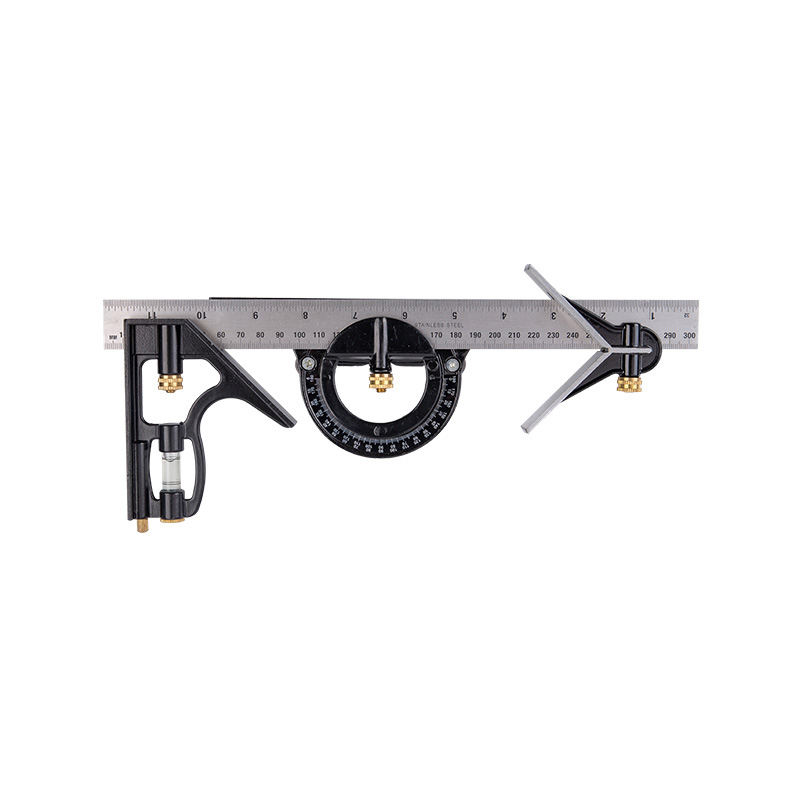To accurately measure the height of a router bit or saw blade using a combination square, follow these steps:
Select the appropriate head: When preparing to measure the height of a router bit or saw blade, it's essential to choose the correct head of the combination square. The square head, also known as the 90-degree head, is ideal for measuring perpendicular angles, which is often the case when determining the height of a blade. On the other hand, the protractor head is more suitable for measuring angles other than 90 degrees. By selecting the appropriate head, you ensure that your measurements are accurate and tailored to the specific requirements of your task.
Set the blade to the desired height: Before commencing with measurements, it's crucial to ensure the safety of your workspace. Turn off the router or saw and unplug it from the power source to prevent any accidental starts. Once safety measures are in place, adjust the height of the router bit or saw blade to an approximate position that aligns with your intended measurement. This initial adjustment provides a starting point for precise measurements and minimizes the margin of error in your final readings.
Place the combination square against the blade: With the blade set to the desired height, position the combination square against the flat surface of the router bit or saw blade. The key here is to ensure that the rule, or the straight edge of the combination square, is held firmly against the surface of the blade. Any deviation from perpendicular alignment could result in inaccurate measurements. By maintaining a perpendicular orientation between the square and the blade, you guarantee the integrity and precision of your measurements.
Adjust the rule: With the combination square firmly positioned against the blade, proceed to adjust the rule to achieve precise contact with the point of the blade. This adjustment requires meticulous attention to detail, as even slight discrepancies can affect the accuracy of your measurements. Apply gentle pressure while sliding the rule up or down to ensure that it makes full and consistent contact with the blade's surface. Take your time with this step to achieve alignment and minimize potential errors in your measurements.
Read the measurement: Once the rule of the combination square is securely in place against the blade, carefully examine the measurement scale located on the rule. Pay close attention to the markings on the scale, ensuring accurate interpretation and recording of the measurement. Depending on the scale's design, you may encounter both metric and imperial units, requiring careful consideration to select the appropriate measurement value. Take note of any fractional or decimal values to capture the precise height of the blade with accuracy.
Double-check the measurement: To validate the accuracy and consistency of your measurements, it's advisable to perform multiple measurements at various points along the blade. This practice helps identify any potential variations or irregularities in the blade's height, allowing you to make necessary adjustments for greater precision. By conducting thorough double-checks, you instill confidence in the reliability of your measurements and ensure the integrity of your woodworking or metalworking projects.
Heavy duty professional combination square




 English
English Español
Español
















